The Doctor: First Doctor (William Hartnell)
The Companions: Susan (Carole Ann Ford), Barbara (Jacqueline Hill), Ian (William Russell)
The plot: The TARDIS arrives in France during the Reign of Terror
Written By: Dennis Spooner
First aired: 08/08/1964-12/09/1964
Continuity: None
Season 1, Episode 37-42 review
There can be no loyalty or honour where anarchy prevails
Jules
The first season rounds out with a lacklustre historical about the French Revolution: The Reign of Terror. One of Doctor Who‘s infamous lost serials, the two missing episodes have now been animated with original audio and the entire storyline is finally available for people to view.
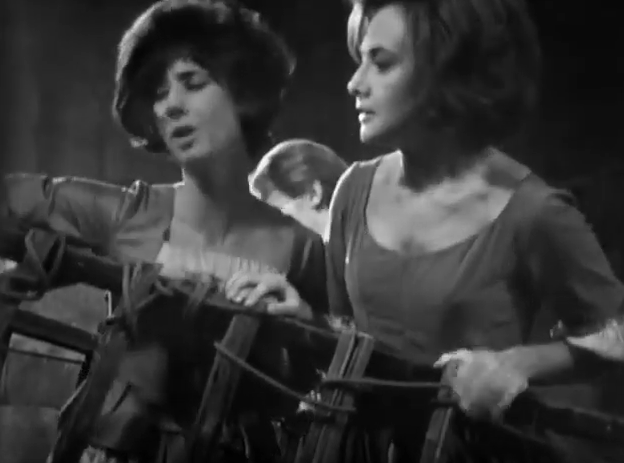
A common criticism of The Reign of Terror is that, like a lot of Classic Who, it stretches too little plot over too little episodes. I’m here to propose a different point of view. I think the serial’s problem is that it is several episodes too short. Trapped in Revolutionary France in the midst of the chaos and social dissolution of the Reign of Terror (1793-1794), our heroes are put into genuine danger but are then merely trying to extricate themselves. With more time to flesh out the historical context of the adventure and provide some background to the action, our Doctor and his companions could have formed relationships and gotten intricately involved in the machinations of the late Revolutionary era in France. Instead, like a lot of the original historicals, they spend most of their time simply trying to find each other and leave.
As Spooner’s first story for the show, The Reign of Terror already shows signs of some of his signature weaknesses. And as a man who’s set to take over the job of script editor from Whitaker, these weaknesses are about to make a big impression on the show.
But taken as its own story independent from Spooner’s legacy, The Reign of Terror has its own strengths: not the least as a discussion of the violent anarchy of social disintegration. Our companions are plunged into the centre of infrastructure collapse, one with little foundation for them to find a solid footing: a kind of societal quicksand where their only two options are to escape or die.
In France now there are only two sides. You’re either with us or against us… If you intend to stay in France, you will have to choose.
Rouvray
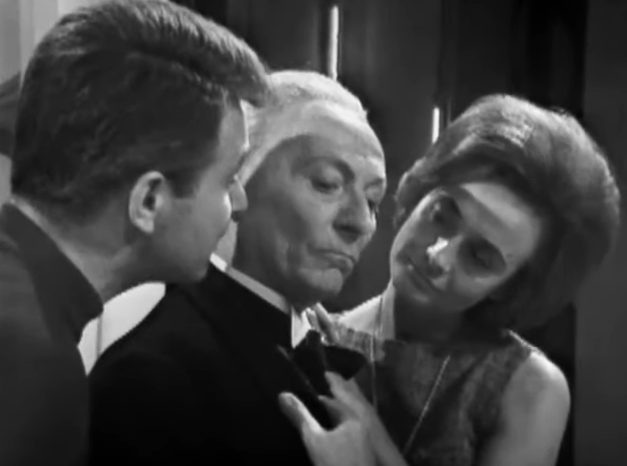
The Reign of Terror begins with the Doctor announcing he has gotten Ian and Barbara back to Earth (finally). After the Marco Polo incident, the two humans are naturally sceptical and the Doctor is either deeply offended or is merely pretending to be offended. Either way, the whole group goes out to either confirm their location or to have a farewell drink, depending on whether they’re convinced they’re in 1960s England or not.
One of Spooner’s goals for the show was to bring the titular character to the centre of the action and to make him more of the ‘hero’ of the story. It starts with the subtle implication that the Doctor is not quite as lost and bumbling as he first appears. When the TARDIS crew head out to confirm they’re back home, they soon realise they’re stuck in the 18th century France, during the Reign of Terror. This leads Susan to quip that they may not be able to leave now, since this is the Doctor’s favourite era. Ian and Barbara swap knowing looks as they realise they’ve probably been had.
Oh and yeah. These two? Are definitely not “just good friends”.
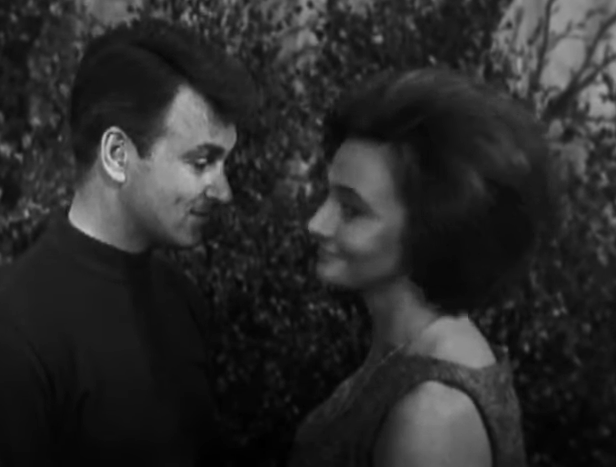
The group locates a farmhouse that turns out to be a waystation for Royalists and members of the aristocracy fleeing the bloody purge that began in 1793 and saw around 17,000 executions in less than a year. It has clothes, food and – suddenly – counter-revolutionaries who are nervous about finding strangers in their safe house. Right behind them are soldiers who kill the two Royalists and take Ian, Barbara and Susan to prison in Paris. The Doctor they fail to find and he is left behind in the burning farmhouse.
In Paris, Susan and Barbara are judged guilty without trial and thrown into the women’s prison where they begin a rather Shawshank Redemption-esque escape plan that achieves little but let rats into their cell. Ian is thrown into a cell with a man named Webster who quickly dies after giving him a message for a man named James Stirling. Stirling is an English spy who has important information to aid Britain’s imminent foray into the French Revolutionary Wars.
Meanwhile, the Doctor survives the farmhouse fire and saunters off to Paris. He eventually runs into, and falls foul of, the overseer of a chain-gang using indentured labour. He outwits him and heads upon his way again.
Back in the prison, a government official named LeMaitre finds out that Ian may have spoken to Webster before his death and crosses him off the list of those being fed to Madame Guillotine. Susan and Barbara, however, are not so lucky and get herded onto a cart to be taken to the execution ground.
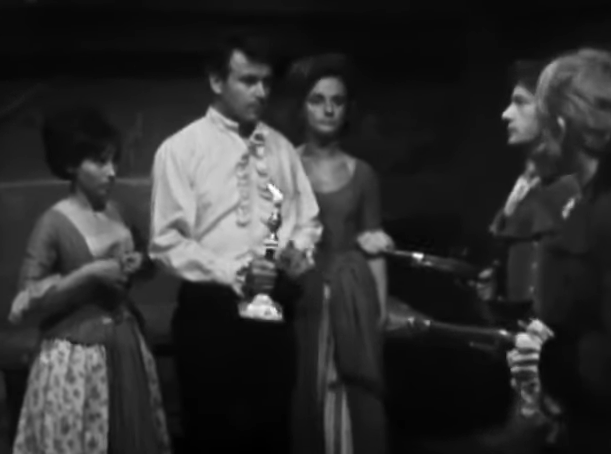
There are two things I found interesting about the first two episodes of the serial. The first is the growing realisation by our characters and the audience that it doesn’t matter what they do or say once swept up into events. Being in the farmhouse at all is enough for them to be tried and executed. Who they are, where they came from, what they were doing there, their story has been rendered instantly irrelevant. It’s the kind of existential disquiet usually brought about by a writer such as Kafka. Our characters are quite literally powerless in every sense of the word. Not just physically restrained but rendered voiceless.
The second thing was the contrast between the intelligent, reasonable and elegantly-mannered Royalists and the rough, brutal and uncultured peasants who are hunting and killing them. The Reign of Terror has been accused of being Royalist propaganda and it’s not hard to see the merits of this particular argument (despite some last-minute efforts by the writer to counter this in later episodes).
As an historical period, the Reign of Terror is the perfect setting for our protagonists (and by extension, us) to feel the full horror of institutional collapse. Nonetheless, if they wish to stay alive, our group of time travellers must inevitably align themselves with the Royalists. In doing so they provide an almost universally positive portrayal of an aristocratic elite that had ground France’s peasant class into paste before the revolution. England is also thrown up in this episode (and later) almost as a saviour, one whose entrance into the Revolutionary Wars is to be welcomed as a stand against tyranny.
England is at war with the people ruling France, Jean. So are we. When the tyranny ends, so will the war.
Jules
It’s hard to know if Spooner assumed his audience would already know the context behind these events or if he simply didn’t care about them. Judging from his future scripts, it’s probably the latter.
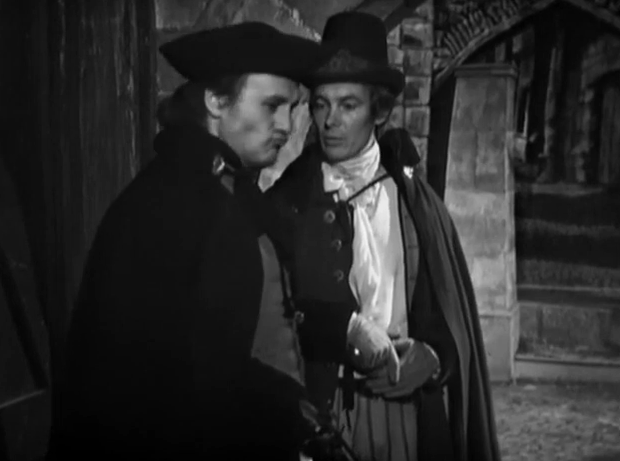
As the third episode opens, the perpetually-annoying Susan does not get guillotined – much to everybody’s disappointment (probably, at this point, Carole Ann Ford’s included). Instead, she thwarts Barbara’s every escape plan by whinging about a headache and sore back and Barbara seems resigned to their inevitable deaths before the two are rescued by counter-revolutionaries Jules and Jean. Ian also escapes the prison when the warden leaves a key in his lock. It is, however, a plan by LeMaitre to find out what, if anything, Webster might have told him.
Meanwhile, the Doctor arrives in Paris and assumes the identity of a regional officer of the provinces with the help of a local tailor. He manages to get an update on the whereabouts of his friends from the Conciergerie Prison but before he can extricate himself he runs into LeMaitre who whisks him off to see Robespierre.
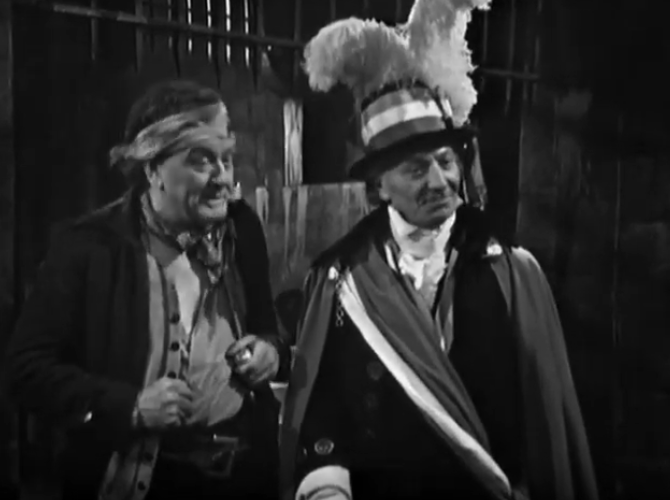
In a safe house in Paris belonging to Jules and his sister, Barbara and Susan agree to tell their saviour their story in exchange for a map. They locate the forest in which they left the TARDIS and ask for help in finding Ian and the Doctor so they can return there. They also tell Jules and Jean about the death of the two counter-revolutionaries in the first episode. Jean is convinced the movement has a spy.
Barbara takes Susan upstairs to rest and the group is soon joined by Leon who reports that a man has been asking for Jules (we know that this man is Ian but of course our group does not). Many recaps and reviews of this episode refer to what happens next as a ‘romantic flirtation’ and even refer to Leon as being Barbara’s lover. It’s an interpretation I find unconvincing. To me Leon’s attitude from the beginning is cagey and borderline menacing and Barbara seems quite uncomfortable in his presence.
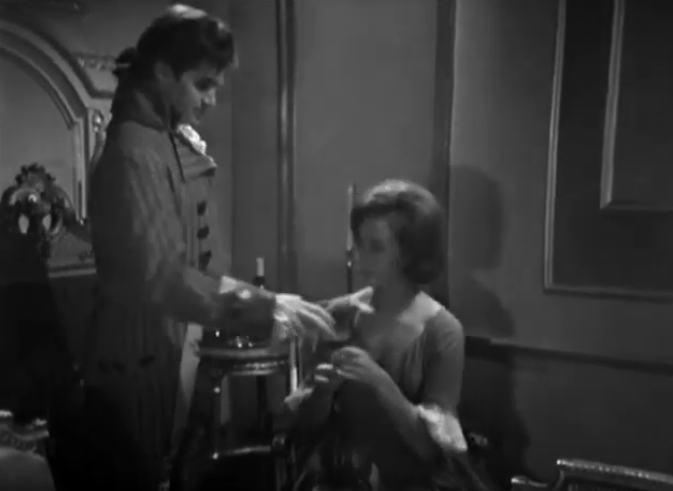
As the episode ends, the tailor shows up at the prison and testifies that the Doctor is not who he says he is.
This is the end of the live action episodes for now. Episodes four and five are animated and I have to diverge slightly to talk about the animation itself. To say that it’s “not good” is to fail to convey the full impact of its rather odd directorial decisions. Classic Who was limited by its sets and budget and wedded to an early 60s aesthetic that was much like theatre. Its directing and editing was passive and unobtrusive: a camera there to capture what happens on stage. The animation, however, is strangely overstated. The characters are all craggy jowls, long shadows and deeply-etched laugh lines. The scenes jump around in quick cuts, emphasising hands and eyes in a way that may work in modern television but is merely confusing in a black and white animation.

Nonetheless, in a choice between this and the audio-over-stills of the later historical, The Crusade, I’d definitely prefer animation. Even this animation.
As episode four opens, the Doctor survives his encounter with an almost ranting, paranoid Robespierre through some witty deflection but the tailor is waiting back at the prison to expose him. Meanwhile, Susan is sick and getting sicker. Barbara is becoming concerned she has prison fever (typhus), an illness with a death sentence if left untreated. Leon offers to find her a physician they can trust and then leaves.
Jules and Jean capture Ian and bring him back to the house where he and Barbara are reunited and he tells them about Webster’s message for Stirling. Neither of the two men know who Stirling is but speculate that a spy would probably be using an alias to enable him to move around unnoticed.
Barbara and Susan head off to the physician that Leon recommended only for him to betray them to the soldiers. The two women end up back in jail where Barbara is reunited with the Doctor. At this point, the serial is beginning to feel like it’s seriously treading water what with all the captures, escapes, reunions, separations. Wash, rinse, repeat. Nonetheless, one of its stronger themes – that in the absence of a functional social framework no player can ever make a winning move – is still developing nicely. And since Robespierre himself ended up on the guillotine, the point is well made.
Ian heads off to meet Leon only to walk into a trap. Leon is of course Jules’ traitor, a fact that Jules works out when he finds out Susan and Barbara have been arrested. He rescues Ian and the two head back to the safe house. The Doctor tries to free Susan and Barbara from the prison while LeMaitre is summoned to see Robespierre. They then have the most interesting conversation of the serial and it’s stark that none of our characters are in this scene at all.
Mark my words, LeMaitre. If this plot is successful, tomorrow, the 27th of July 1794, will be a date for history
Robespierre
It’s episode four and we only just learn that this serial is set right near the end of the Reign of Terror. In fact, one day before its end. (Apropos of absolutely nothing, the Thermidorian Reaction to this day sounds to me like a recipe for cooking a crustacean). Robespierre is about to be overthrown and executed himself. Hoist by his own petard in many respects. But whether he was an idealist or an ideologue is a matter of interpretation. On paper, he was certainly the former. But nobody who can unleash a bloody and ultimately pointless wave of crushing death can be seen as anything other than an ideologue. Or perhaps authoritarianism merely breeds authoritarianism like an abused child who becomes an abuser.
Thankfully, we have Barbara to (however briefly and belatedly) remind us of the atrocities that led to the revolution in the first place. Back at the safe house, she’s reunited with Ian (I actually winced on having to type that yet again) but our resident history teacher reacts poorly to Leon’s death. Or perhaps not to his death per se but to Ian’s cavalier dismissal of it. “He was a traitor,” he says, “he betrayed us.” Ian speaks as though the Royalist cause was their own. “He deserved it.”
You check your history books, Ian, before you decide what people deserve.
Barbara
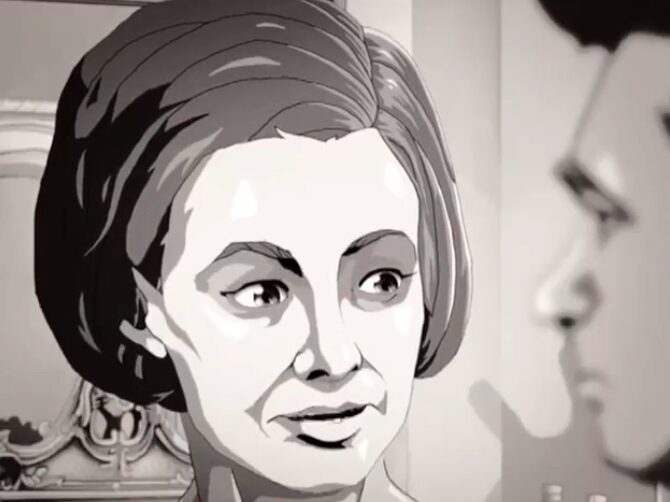
It’s just a shame that Barbara’s welcome acknowledgment of the reasons behind the French Revolution comes coloured with the implication she may have been romantically involved with Leon (an interpretation as I said I reject). Instead of being angry at Ian so completely aligning their group with the counter-revolutionaries, she instead comes across as being angry he shot her lover. It’s just like Spooner – whose treatment of female characters is sexist, even misogynistic – to allow Barbara a moral voice only when it concerns her romantic life.
As the show moves into its final episode – and thankfully back into live action – LeMaitre reveals himself to be James Stirling. This explains why he engineered Ian’s escape from prison and turned a blind eye to the Doctor’s deceit as well. Holding Susan in the Conciergerie Prison, he makes a deal with the Doctor: that Barbara and Ian will spy on a meeting being held by Barras, whom Robespierre suspects to be plotting against him. In exchange he will free them and escort them back to the TARDIS.
The gang agrees and Ian and Barbara head off to the inn to spy on Barras’ meeting with… Napoleon Bonaparte. Barras is here to gain Napoleon’s support in the overthrow of Robespierre.
This… did not happen. In fact, it’s complete nonsense.
LeMaitre aka James Stirling is appalled at the idea that Napolean will one day rule France and runs off to try to save Robespierre. He’d rather Robespierre than a military dictatorship but Barbara tries to tell him it’s inevitable. He doesn’t listen and she and the Doctor have one of their conversations about the inevitability of history. For a serial ostensibly about history, it has taken a sharp detour into fantasy.
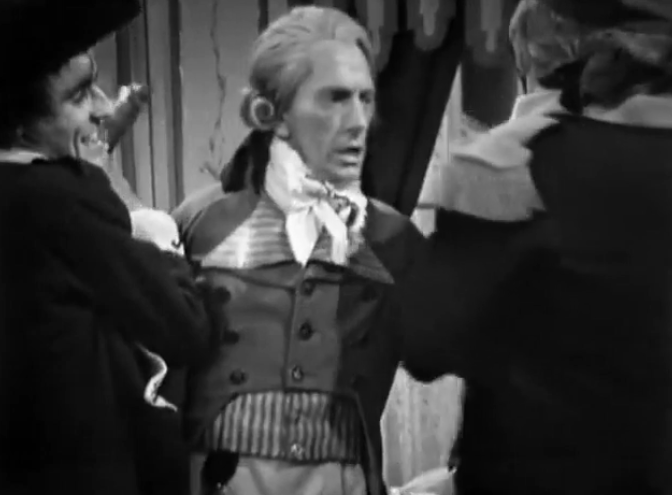
Robespierre is overthrown in a brief throwaway scene while our main characters effect their escape. He is brought to the prison where he is subjected to the same miscarriage of justice he has inflicted on so many others. It would be a powerful statement except it’s nothing but a rushed afterthought in the wake of the escape.
And escape they do. Saying their farewells, they sail off into the stars leaving history to unfold as it ever did.

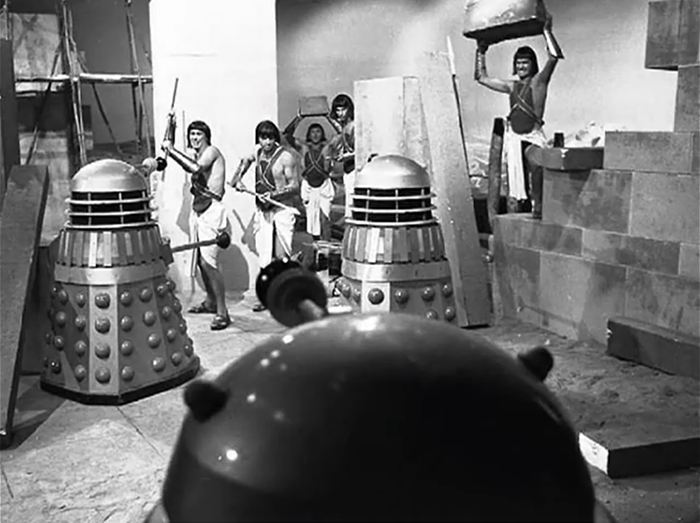


3 thoughts on “The Reign of Terror: Doctor Who S1, Serial 8”